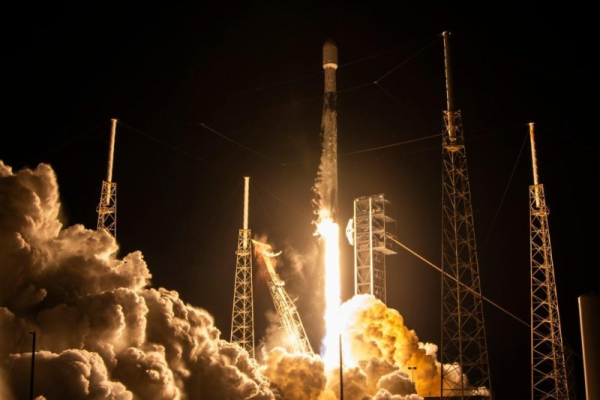
South Korea plans to send a shoebox-sized cube satellite on the Artemis II test flight in April 2026, NASA and the Korea Aerospace Industry Agency said Friday.
NASA aims to send four astronauts around the moon on the 10-day mission, the first such event since Apollo 17 landed humans on the lunar surface in 1972. Artemis II was originally scheduled to launch in 2024.
The Korea Aerospace Administration was founded last year.
The K-RadCube, being developed by South Korean space startup Nara Space Technology Inc., will be mounted on the Orion stage adapter, which sits between the Space Launch System rocket and the Orion crew spacecraft, NASA said.
Once the satellite is completed, the Korean Space Agency plans to hand it over to NASA by July.
The 42-pound satellite, which will fly safely a short distance from the stage, will monitor space radiation and study its effects on astronauts as it passes through the Van Allen radiation belts more than 2,200 miles above Earth.
These belts are made up of high-energy particles held by the Earth's magnetic field.
According to NASA, cube payloads represent “a relatively cost-effective way to increase knowledge of the space environment and allow CubeSat providers to continue to advance the development and integration of space mission hardware.”
Korea Aerospace Research Institute CEO Yoon Young-bin said in a Korean-language press release, “Through this implementation agreement, we expect closer cooperation between the Korea Aerospace Research Institute and the National Aeronautics and Space Administration in deep space exploration beyond the moon.”
The space agency intends to make data obtained by K-RadCube available to the public.
“As the scale of space exploration increases, understanding high-risk space environments will become increasingly important,” said Choi Young-jun, deputy director of the Korea Institute of Astronomy and Space Science. “While experiments can be conducted on Earth to simulate space conditions, nothing can replace the value of conducting experiments in real geostationary orbit with various variables.”
NASA's Ames Research Center in Silicon Valley, California, launched its first CubeSat, GeneSat, in December 2006. Ames has launched 16 CubeSats ranging in size from 1U (10x10x10 centimeters) to 3U, and 12 more CubeSats are in development or awaiting launch.
NASA is collaborating with other countries “to integrate and deploy technologies and experiments as part of the agency's Artemis campaign,” a NASA press release said.
In September, NASA announced an agreement with the German space agency DLR to launch a CubeSat aboard Artemis II.
In April 2024, NASA and Japan signed an agreement to build a pressurized lunar rover.
NASA Deputy Administrator Pam Melroy visited South Korea to discuss international cooperation in July 2024.
Chosun Biz in South Korea reported that the signing of the agreement to implement the K-RadCube was delayed due to the complete suspension of new agreements between the U.S. and foreign countries since the Trump administration took office on January 20.
KAA Administrator Yoon Young-bin met with Janet Petro, NASA's acting administrator general, last month during the 2025 Space Symposium in Colorado Springs, Colorado.
In 2022, the Artemis I spacecraft entered lunar orbit with a dummy.
The first human landing on the Moon as part of the Artemis III program is planned for mid-2027.
Sourse: www.upi.com





